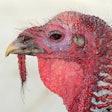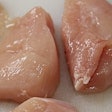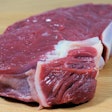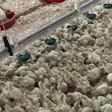
Neogen has released its 2018 Capstone Report, a review of the 2018 growing and harvest season, and mycotoxin occurrences across the U.S. and Canada.
Neogen’s weekly mycotoxin reports throughout the growing season provide viewers with a high-level snapshot of the upper-level mycotoxin risks in each state, but actual levels may vary.
Mycotoxin occurrence
Throughout the 2018 growing season, reports for deoxynivalenol (DON) were widespread in wheat and barley.
- Confirmed reports of DON in barley came from Minnesota and Pennsylvania.
- Confirmed reports of DON in wheat came from Wisconsin, Michigan, New Jersey, Pennsylvania, Indiana, Illinois, Maryland, Delaware, North Carolina, Virginia and Ohio.
A wide range of toxins were found in this year’s corn crop, including DON, zearalenone (ZEA) fumonisin (FUM), aflatoxin and T-2/HT-2 toxin. Corn silage and corn feed products also had elevated levels of toxins.
- Confirmed reports of aflatoxin in corn came from Texas, Oklahoma, Kansas, Georgia, Iowa, Missouri, Arkansas, Illinois and North Carolina.
- Confirmed reports of FUM in corn came from Texas, Missouri, Kansas, Arkansas, Oklahoma, New York and Nebraska.
- Confirmed reports of DON in corn came from Nebraska, South Dakota, Wisconsin, Minnesota, Michigan, New York, Indiana, Ohio, Vermont, Iowa, Pennsylvania and Ontario, Canada.
- Confirmed reports of ZEA in corn and corn silage came from New York, Iowa, South Dakota, Vermont, Nebraska, Illinois and Ohio.
- Confirmed reports of T-2/HT-2 toxin in corn came from Ontario, Canada.
The season’s only confirmed report of mycotoxins in soybeans was a DON report from Iowa.
Weather recap
Throughout the growing season, some regions experience drought conditions while others saw very wet weather.
May
By the end of May, severe drought affected the Texas panhandle, Oklahoma and Northern Plains. Michigan and Pennsylvania were both very wet, which delayed corn planting. Early rains in Nebraska affected toxin growth. Overall, temperatures were normal to above normal, which helped crop emergence rates. One exception was in the Southwest, where drought conditions hurt the early wheat crop. Ninety-two percent of corn was planted by late May, which is two points higher than the five-year average.
June
In June, drought conditions in Texas, Oklahoma, Louisiana, Kansas and Missouri worsened. Nebraska, Iowa and southern Minnesota remained very wet. June temperatures were normal to above normal, pushing corn silking stage two points ahead of the five-year average. June corn ratings were mostly good, although corn in Kansas, Texas, North Carolina and Missouri showed signs of stress. Forty-one percent of winter wheat was harvested in June, eight points ahead of the five-year average. Other small grains matured well, with mostly favorable quality ratings.
July
July saw persistent dry conditions in the Southern Plains. The Northern Plains, New York and Northeast saw some relief. Midseason temperatures continued at or slightly above normal, pushing corn silking to 90 percent and the dough stage to 38 percent, almost double the five-year average. Overall, corn in poor to very poor condition was 9 percent. By the end of July, 97 percent of the barley crop was harvested, with ratings mostly good to excellent; winter wheat harvest was 85 percent complete.
August
August brought heavy rains to Iowa, Illinois, Wisconsin and Michigan. Rain came to drought-affected areas, but it was too late to avoid aflatoxin risk in states including Missouri, Texas and Oklahoma. In August, 75 percent of corn was in the dented stage and 22 percent was fully mature. Overall, poor to very poor ratings rose to 12 percent. Barley, spring wheat and durum harvests rose to 80 percent complete.
September
September saw mostly normal temperatures, but wet conditions slowed corn drydown. The Mid-Atlantic region and Iowa experienced the wettest conditions. The Southwest saw drought areas shrink. The small grains harvest was mostly complete, while 97 percent of corn had passed the dented stage and 72 percent was fully mature – well ahead of normal – and 16 percent was harvested. Poor to very poor ratings held mostly steady, although several states – Missouri, North Carolina, Kansas, South Dakota, Michigan and Colorado – experienced elevated poor to very poor ratings.
Grain planted late and/or in areas that became wet in late summer had higher toxin development, especially fusarium toxins such as deoxynivalenol (DON) and zearalenone (ZEA).
Technical report available
Also included in the Capstone Report is a technical report.
Pat Frasco, Neogen’s director of milling and grain, presented, “What you need to know about storing grain,” which offered tips on proper grain storage management to control grain quality.


















